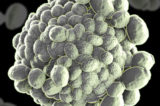The crucial step for a successful alcoholic fermentation in wine – Wine Yeast Rehydration
Proper wine yeast rehydration is necessary because grape must is a very hostile environment with its low acidity, high sugar and osmotic pressure, and nutrients or micronutrients limitations is a big challenge for any yeast to conduct AF. Quality, fault free wine is related to a successful AF, and that comes with taking good care of your dry wine yeast. The Under Investigation explains why and how, and how rehydrating your yeast is key, and especially with a protector like Go-Ferm Protect Evolution.
UI Protection and Rehydration ENG VUSA

